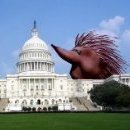Smoke, Smog, Dust 2012 Chiang Mai
-
Recently Browsing 0 members
- No registered users viewing this page.
-
Topics
-
-
Popular Contributors
-
-
Latest posts...
-
145
Will there ever be a safe vaccine?
Ignore! Why? Would you not like to discuss the points in question, and assess the situations? Surely medical science can be questioned. Or is it that set in stone that it can't be spoken of! Heard it so many times on MSM down the years; 'The science is settled'. -
24
Almost can't stand all that Trump winning on his B Day.
Quit you’re whining and get used to it -
20
Middle East Cracks Within: Iran’s Supreme Leader Faces Mounting Pressure Amid Crisis
Far be it from me to cast aspersions on your sexual persuasion 😋, but I totally agree. Religio-purity angle and devious minds aside, the virgin concept is a proper fallacy. From my perspective at least, if the receiver is not enjoying it, it is a big turn-off. Those guys with their 72 thing are so lost. Khamenei; yep. One of those special people—like our Korean friend, Wrong-Un—that is in dire need of meeting his maker. -
3
-
20
The locals are fed up with the annoying tourists.
In Thailand, tourist are coming to participate in this!- 1
-

-
129
Report Confusion Plagues Thailand's New Digital Nomad Visa, Leaving Applicants Stranded
Particularly Criminals, if you apply for a Visa in your home country, then at least they know with some certainty that you are not wanted..
-
-
Popular in The Pub




.thumb.jpeg.d2d19a66404642fd9ff62d6262fd153e.jpeg)






Recommended Posts